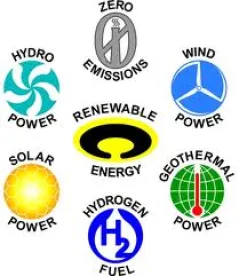Federal tax law allows taxable corporations to receive a 30% investment tax credit for renewable energy facilities. In addition, taxable corporations can receive substantial value from the ability to depreciate the cost of renewable facilities and potentially use that depreciation to offset other income. Tribes cannot directly claim tax credits or depreciate assets because they do not pay income taxes. Tribes can, nonetheless, obtain most of the monetary value of these tax benefits by partnering with entities that are in the business of developing wind energy and wish to offset their or others' federal tax liability. This partnering could be structured by a tribe forming a limited liability company (LLC) with a taxable corporation that can utilize the tax credit and depreciation. This LLC would develop and own the renewable energy facilities.
We recommend that a tribe use a request for proposal (RFP) or other competitive process to identify an appropriate taxable development partner, so that they can obtain the best available proposal for the renewable energy project and the best value for the 30% investment tax credit and potentially depreciation. Under the RFP strategy, the tribe would make taxable developers aware of its renewable energy development plans, as well as potentially its willingness to pay for a portion of the renewable energy project.
The RFP would request the taxable developers to provide their best proposals regarding the development and financing of the renewable energy facilities, including proposals regarding:
-
The overall cost of the renewable energy facilities.
-
The particular equipment to be installed and the warranties on that equipment.
-
The developer's willingness to limit the amount of the financial contribution by the tribe.
-
The developer's willingness to limit, in time and amount, any payments by the tribe for energy from or for leasing the renewable energy facilities.
The tribe could then select the taxable development partner that provides the best financial and other terms. A potential result of the RFP process could likely be that if the tribe is willing and able to pay for one half of the renewable energy facilities, a taxable developer might be willing to finance the rest of the facilities. Even if the developer does not share any of the value of the depreciation, it may be willing to at least provide the tribe full value for the investment tax credit. This would mean that there would be only 20% of the project cost to be paid over time. This could be accomplished by having the tribe pay a reduced rate for electricity for a period of at least five years (to avoid any recapture of the tax credits under IRS rules), and then for the developer, once it is made whole on its investment, to turn the facilities over to the tribe, potentially free of charge.
This transfer could be accomplished by allowing the tribe to use its 50% contribution to the LLC to purchase the taxable developer's interest in the LLC, and for the tribe to have the right to purchase this interest based upon the renewable energy facilities' value under a theoretical removal and sale of the facilities. Thus, under this scenario, the tribe's initial capital outlay for the renewable energy facilities would be reduced by half, and the tribe would be able to receive reduced-priced energy for an interim period of time and then obtain full ownership of the renewable energy facilities.




 />i
/>i

